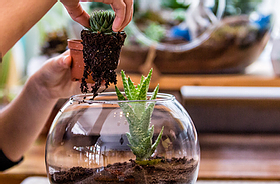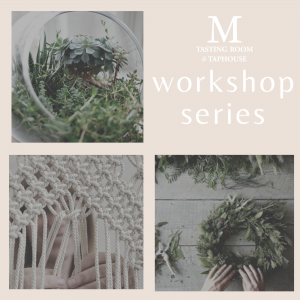
The embellishments added include individual taste. In any case, make an effort not to use any unnecessary number of embellishments or ones with particular, unnatural tones. Moreover, be careful so as not to give bugs or disease the embellishments. Get-together the terrarium Plan. When arranging plants, assortment in size, concealing likewise, the surface is appealing. Since terrariums commonly are seen from one side, the creating medium should be skewed for an overview from that side and plants arranged so taller plants are aft. Terrarium Workshop available in most of the countries. Use rocks, sand, wood, and other trademark materials to make cliffs, rock edges, dry streambeds, or rich tropical forest areas. Undulations tending to inclines and valleys will make the scene more interesting than a level surface.
Depicting an arrangement of the terrarium before truly assembling it will in general be helpful

Set up the compartment. Before planting, spotless and clean inside the compartment by washing it with hot, frothy water and washing totally. Guarantee inside the compartment is dry before planting. If a business glass cleaner is used, grant the open compartment to air for a couple of days before planting. Add squander material and creating a medium. All in all, around one-fourth of the terrarium’s volume, should be used by the creating medium and leakage material. These can be added successfully with a spoon, pipe, or another supportive device. Squander. Instituted charcoal and stones should be set in the lower part of the compartment for squander. These may be joined; anyway, the charcoal ordinarily will be best in shedding engineered substances that could exhibit to be unsafe to plants at whatever point set in a ½-inch layer over the layer of rock, crushed pots, marble chips, or other leakage material. Charcoal is especially critical in closed terrariums, which hinder the trademark break of engineered substances. Sphagnum greenery, set over the layer of rock and charcoal, shields the forming medium from separating into the leakage zone. Creating medium. At that point, add the creating medium. It should be fairly wet with the objective that it doesn’t stir up buildup yet, not all that drenched that it is messy and sticks to the sides. For most holders, a base significance of 1½ inches is critical to give sufficient volume.
Adding plants
Select simply strong, contamination-free plants since shut terrariums address an ideal environment for plant diseases to flourish. In case there are sickness concerns, encase plants in a plastic pack and spot them in splendid light for around fourteen days before planting in the terrarium. Accepting any afflictions are accessible, they routinely will get clear on the foliage or stems. Preceding adding the plants, engineer them in an open zone about the size of the holder to get a considered relative size besides, textural plans. A low, coarse-completed plant is routinely appealing for an overwhelming purpose of combination near the front. Try not to amass a collection of variegated or sporadic plants. They battle with each other and don’t make a united model. Trim off a couple of roots from incredibly pot-bound plants. Rapidly place each plant in the holder with the objective that the uncovered roots don’t dry. In a shut compartment, endeavor to shield foliage from reaching the sides of the holder. Leaves reaching the glass will accumulate water and be more reliant upon decay.
